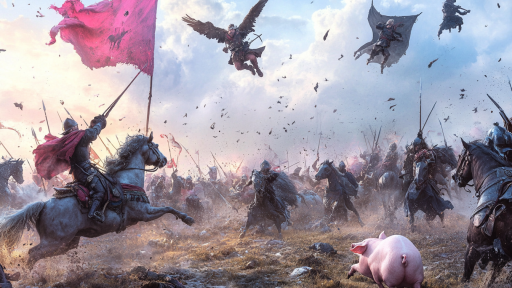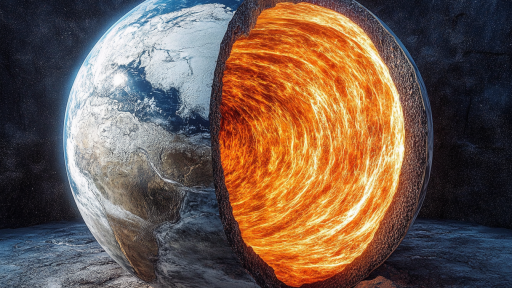
Some of history’s most groundbreaking discoveries came at a deadly cost. Explorers have braved uncharted lands, perilous seas, and frozen wastelands in pursuit of knowledge, often facing starvation, disease, and the unknown. Many never returned, but their sacrifices reshaped our understanding of the world. These daring expeditions proved that the greatest discoveries often lie beyond the limits of human endurance.
Magellan’s Voyage – The First Circumnavigation of the Globe

Ferdinand Magellan set sail in 1519 to prove that the world could be circled by sea, but his expedition quickly turned into a nightmare. Disease, starvation, and brutal battles wiped out most of his crew, and Magellan himself was killed in the Philippines before completing the journey. The survivors pushed forward, finally returning to Spain in 1522 with just one ship out of the original five. Their voyage proved the Earth was round and forever changed global navigation.
The Lewis and Clark Expedition – Mapping the American West

When President Thomas Jefferson sent Meriwether Lewis and William Clark to explore the newly acquired Louisiana Territory, the two men led a grueling trek into the unknown. They faced harsh winters, hostile terrain, and unpredictable encounters with indigenous tribes, relying on their guide Sacagawea for survival. Their expedition mapped vast regions of North America and provided crucial information about the continent’s geography and resources. Their journey set the stage for westward expansion and changed the course of American history.
Shackleton’s Endurance Expedition – Survival Against All Odds

In 1914, Ernest Shackleton and his crew set sail to cross Antarctica, but disaster struck when their ship, the Endurance, was trapped and crushed by ice. Stranded in the most inhospitable place on Earth, Shackleton led his men on a harrowing escape across drifting ice floes and treacherous seas. Against impossible odds, every crew member survived, thanks to his extraordinary leadership. Their story became one of the greatest tales of survival in exploration history.
The Apollo 11 Mission – The First Humans on the Moon

Landing on the Moon was one of humanity’s most dangerous and ambitious endeavors. Neil Armstrong, Buzz Aldrin, and Michael Collins risked their lives in an untested spacecraft, facing the terrifying unknown of space travel. A single failure could have left them stranded on the lunar surface forever. Their successful mission changed the world, proving that humans could reach beyond Earth and inspiring generations to look toward the stars.
Humboldt’s Journey Through South America – Unlocking the Secrets of Nature

Alexander von Humboldt’s scientific expedition into South America in the early 1800s nearly cost him his life. He battled tropical diseases, poisonous wildlife, and near-starvation as he traversed rainforests, mountains, and rivers. But his discoveries transformed science—he mapped the Amazon, studied electric eels, and laid the foundation for modern climate science. His research reshaped how we understand nature, ecosystems, and the interconnectedness of life on Earth.
The Search for the South Pole – Scott vs. Amundsen

The race to the South Pole was one of the deadliest competitions in exploration history. Roald Amundsen and Robert Falcon Scott led rival expeditions to be the first to reach Earth’s southernmost point. Amundsen’s team succeeded, but Scott’s expedition ended in tragedy—his entire crew perished on the return journey, just miles from safety. Their struggle in the frozen wilderness provided invaluable data on Antarctica’s harsh conditions and helped shape future polar exploration.
The Kon-Tiki Expedition – Proving an Ancient Migration Theory

In 1947, Norwegian explorer Thor Heyerdahl set out to prove that ancient South Americans could have sailed across the Pacific to settle in Polynesia. He built a primitive raft, the Kon-Tiki, and set adrift with a small crew, braving storms, sharks, and the open sea. Against all odds, they reached their destination, demonstrating that early civilizations were capable of transoceanic travel. His daring experiment changed our understanding of human migration and ancient navigation.
The Deep-Sea Dive to the Mariana Trench – The Deepest Point on Earth

In 1960, Jacques Piccard and Don Walsh descended nearly seven miles into the Challenger Deep, the deepest part of the ocean. Their tiny submersible withstood crushing pressure as they plunged into complete darkness, encountering bizarre, unknown sea creatures. Their journey proved that life could survive in extreme conditions and opened the door to deep-sea exploration. Even today, the Mariana Trench remains one of the most mysterious places on Earth.
The Climbing of Mount Everest – Reaching Earth’s Highest Peak

Sir Edmund Hillary and Tenzing Norgay’s 1953 ascent of Mount Everest was one of the most dangerous feats in history. Battling freezing temperatures, thin air, and treacherous cliffs, they risked death with every step. When they finally reached the summit, they stood on top of the world—an achievement once thought impossible. Their success inspired countless adventurers and cemented Everest as the ultimate challenge in human endurance.
Pushing the Limits of Exploration

From the icy depths of Antarctica to the vastness of space, these daring explorers risked everything to uncover the unknown. Their courage led to discoveries that reshaped history, proving that danger is often the price of knowledge. What other frontiers remain to be conquered? As long as curiosity drives humanity forward, the world—and beyond—will never run out of mysteries waiting to be uncovered.





